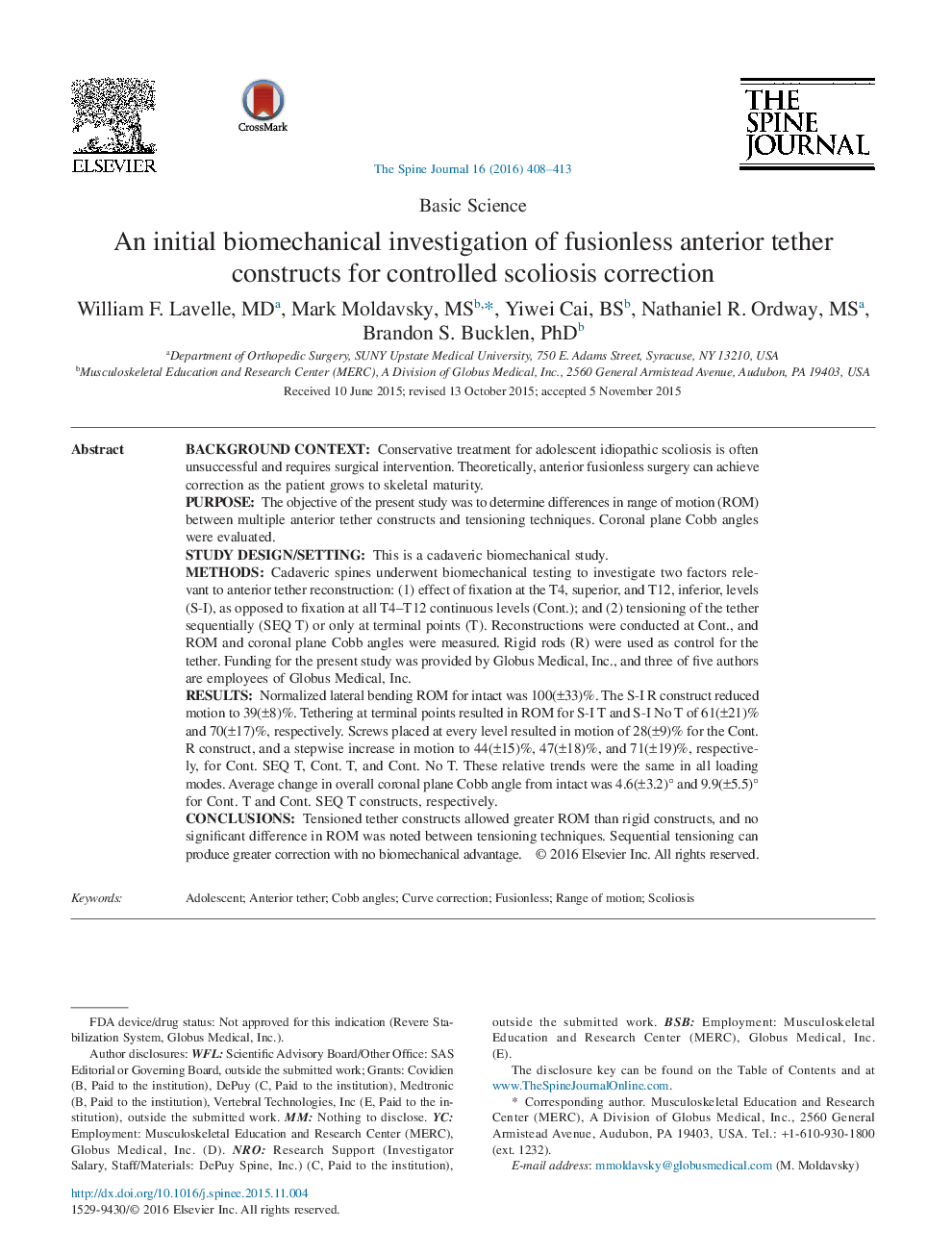| Article ID | Journal | Published Year | Pages | File Type |
|---|---|---|---|---|
| 4096301 | The Spine Journal | 2016 | 6 Pages |
Background ContextConservative treatment for adolescent idiopathic scoliosis is often unsuccessful and requires surgical intervention. Theoretically, anterior fusionless surgery can achieve correction as the patient grows to skeletal maturity.PurposeThe objective of the present study was to determine differences in range of motion (ROM) between multiple anterior tether constructs and tensioning techniques. Coronal plane Cobb angles were evaluated.Study Design/SettingThis is a cadaveric biomechanical study.MethodsCadaveric spines underwent biomechanical testing to investigate two factors relevant to anterior tether reconstruction: (1) effect of fixation at the T4, superior, and T12, inferior, levels (S-I), as opposed to fixation at all T4–T12 continuous levels (Cont.); and (2) tensioning of the tether sequentially (SEQ T) or only at terminal points (T). Reconstructions were conducted at Cont., and ROM and coronal plane Cobb angles were measured. Rigid rods (R) were used as control for the tether. Funding for the present study was provided by Globus Medical, Inc., and three of five authors are employees of Globus Medical, Inc.ResultsNormalized lateral bending ROM for intact was 100(±33)%. The S-I R construct reduced motion to 39(±8)%. Tethering at terminal points resulted in ROM for S-I T and S-I No T of 61(±21)% and 70(±17)%, respectively. Screws placed at every level resulted in motion of 28(±9)% for the Cont. R construct, and a stepwise increase in motion to 44(±15)%, 47(±18)%, and 71(±19)%, respectively, for Cont. SEQ T, Cont. T, and Cont. No T. These relative trends were the same in all loading modes. Average change in overall coronal plane Cobb angle from intact was 4.6(±3.2)° and 9.9(±5.5)° for Cont. T and Cont. SEQ T constructs, respectively.ConclusionsTensioned tether constructs allowed greater ROM than rigid constructs, and no significant difference in ROM was noted between tensioning techniques. Sequential tensioning can produce greater correction with no biomechanical advantage.
